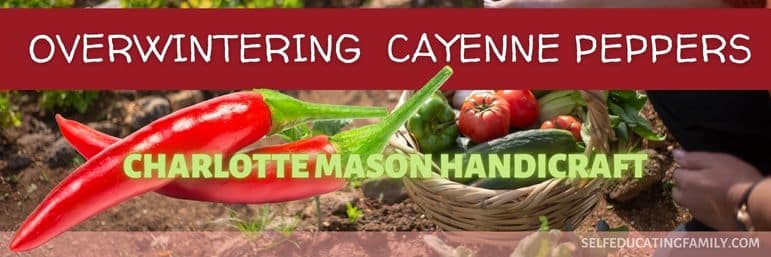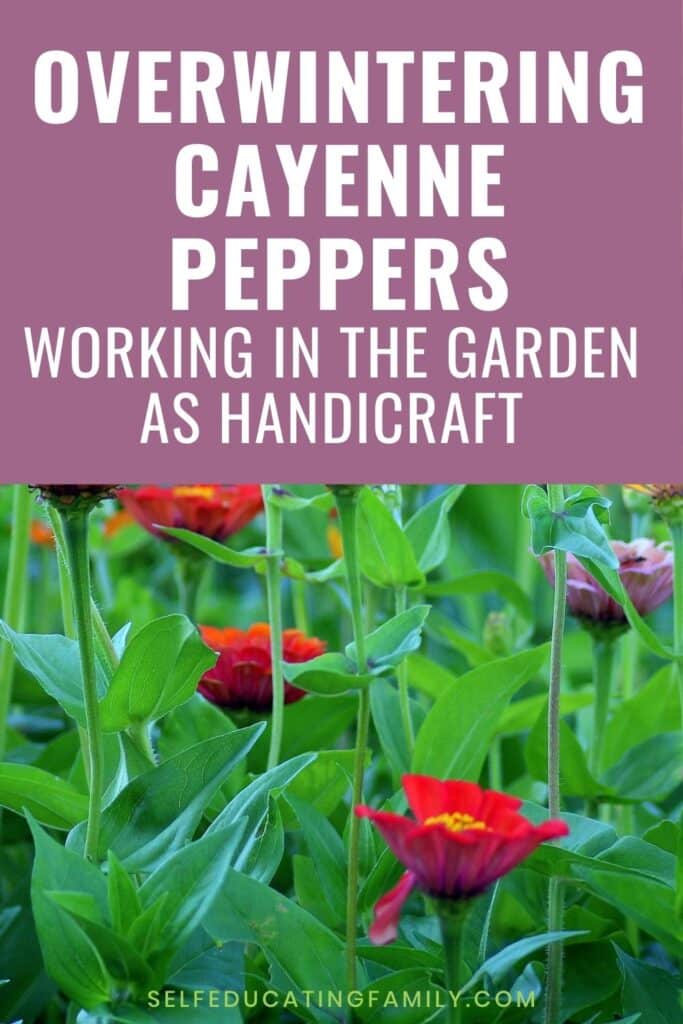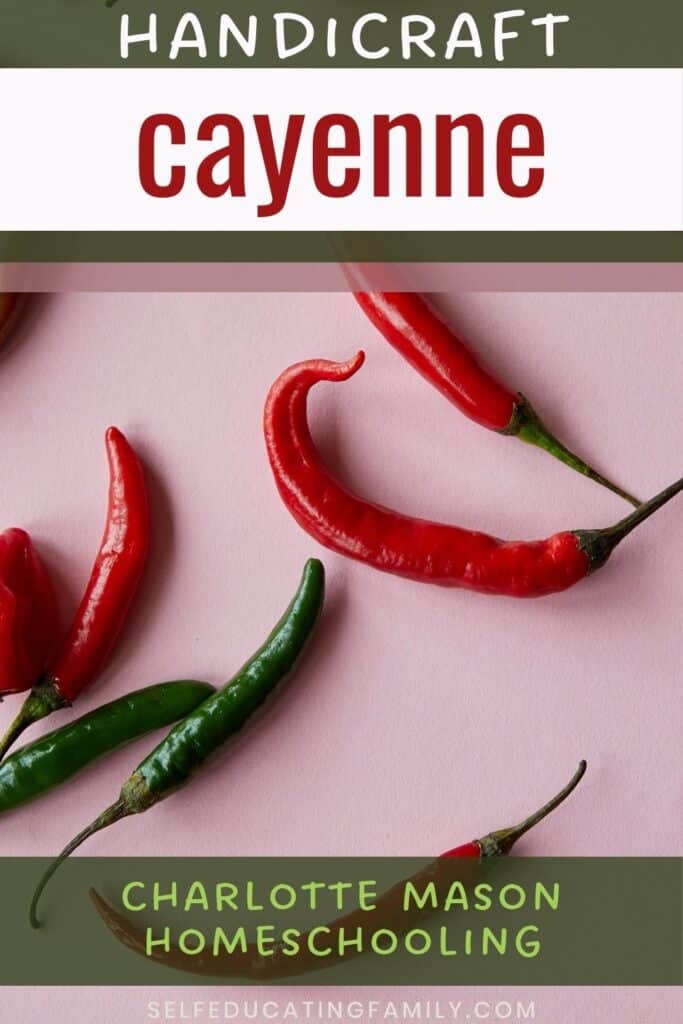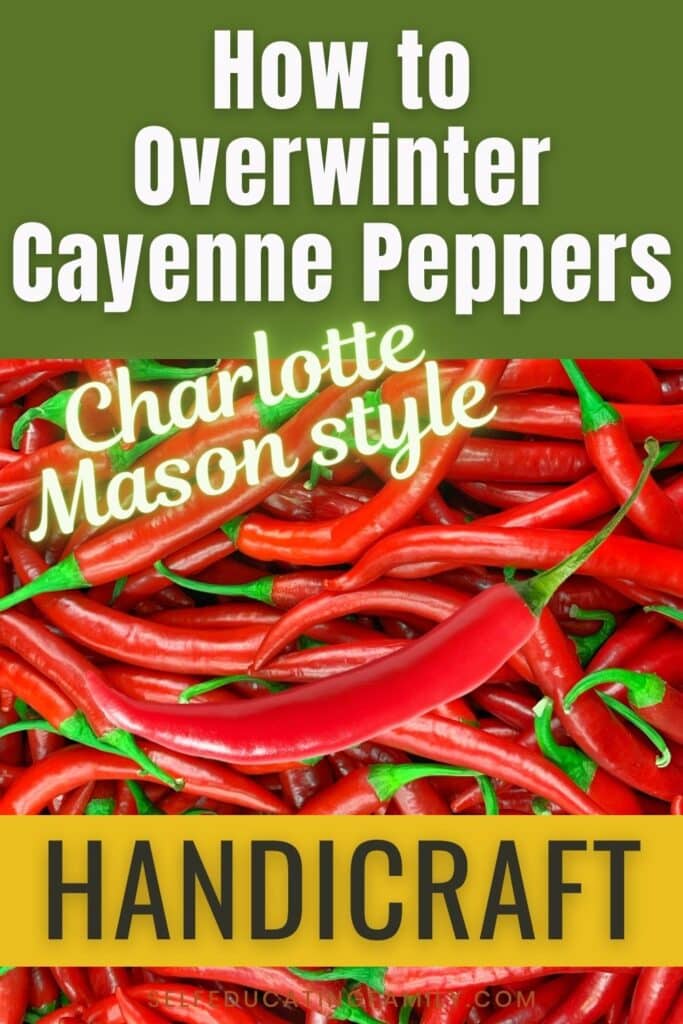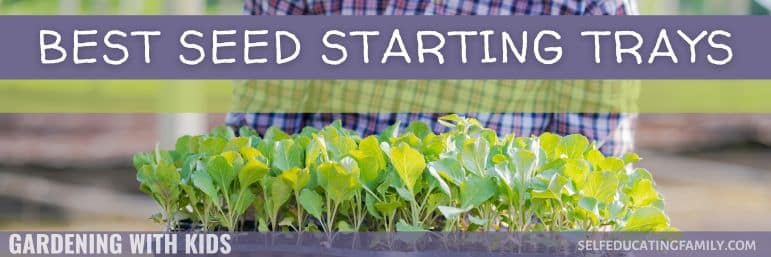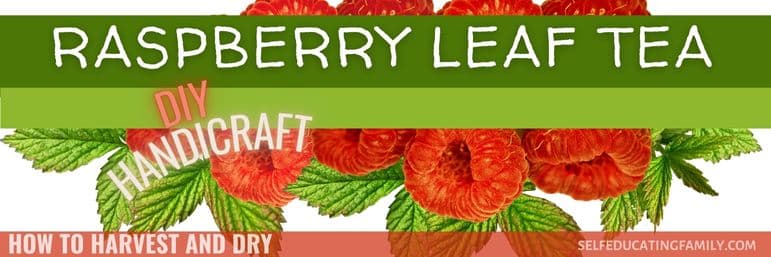What’s Inside: This post about the cayenne pepper plant records how we are overwintering cayenne peppers from our garden and one way you can incorporate winter gardening as handicraft.
Cayenne Pepper Plant
See the background for this post How to Do Gardening as Handicraft if you need some background or How to grow microgreens if you need more “winter gardening” ideas.
This post may contain affiliate links. If you find my content valuable and make a purchase through one of my links, I will earn a commission at no cost to you, which helps me keep this blog going so I can help you even more! I recommend products I trust and/or use myself, and all opinions I express are my own. Read the full disclaimer here.
What is Overwintering?
Overwintering means to protect the more tender plants over the winter. Sometimes, it’s as simple as moving them indoors to a greenhouse or warm window. Other times, you want to help a plant go into a dormant phase to be re-awakened in spring either inside or out in the garden, depending on the plant and on your climate.
In the case of peppers in Zone 5 (my garden!), we are talking about bringing them inside. These tender perennials would not survive long outside in the winter.
In fact, we had a very late fall this year – temperatures were still in the 80s in the daytime well into October. The first frost was late as was the first snow. My peppers that I did not overwinter died in late October with some 20-degree overnights.
What plants can be overwintered?
Annuals, in general really can’t be “overwintered”. You can do some tricks (like succession planting or gardening hoops) to extend the season or you can propagate a new plant from a cutting to bring inside for the winter (e.g. mint or sometimes basil). You can even grow annuals in a hothouse or cold frame over the winter (e.g. growing winter lettuce in a hot bed is a thing).
But annuals have a life cycle and they will eventually die.
Note: The term “overwintering” can refer to any of the above methods, but I’ll be looking at the specifics of bringing a tender perennial inside for a dormant period followed by a re-start of its growth next spring.
Many perennials can be overwintered.
Hardy Perennials
Think for a moment about grape vines or apple trees. These kinds of fruits go into a dormant phase over the winter and then will bloom again next spring when the days start getting longer. But you don’t have to bring them inside.
You might need to deep mulch them to protect their roots.
Even strawberries, rhubarb, and Jerusalem artichokes can usually weather the winters where I live if you give them a deep mulch.
In the herbs category, I do nothing more than mulch my oregano, sage, and even my French Tarragon, and they survive well. However, they are in a little micro-climate against a southern wall in full sun, so the temperatures probably don’t reflect the rest of my yard.
Rosemary sometimes can weather the winter, sometimes not. I haven’t figured out what I’ve been doing successfully or fatally for Rosemary! I don’t like to pot it up and bring inside because I can’t get the moisture level right. I’ve always ended up with that fuzzy blight on it by the end of winter, so I figure it can try its luck outside.
However, tender perennials are a different matter. These must come inside somewhere in order to survive.
The most famous tender perennials for overwintering are Begonias and Geraniums. These can last years if you treat them right.
And I found out this year that peppers can be overwintered!
Peppers are perennials
According to PepperGeek, the Capsicum annuum chili peppers are one of 5 major species of peppers. This widely cultivated group includes cayenne, jalepeno, and even the bell peppers. It was named annuum after these chili peppers were brought to Europe and given the botanical name because they grew them as annuals.
But they are actually perennials.
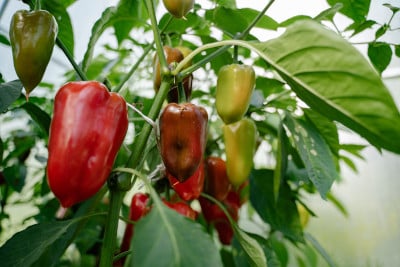
Our Pepper story
Inspiration for this post came from my friend who asked if I grew any cayenne pepper plants this past summer. I was SO excited to tell her about our experiment in overwintering!
A simple question “Do you grow cayenne?” throws me into a giant explanation.
Starting from seed
Last summer, I wanted to experiment and learn all about peppers. So I started back in February by growing my pepper starts from seed. Peppers are long-germinating and usually have a long “days to harvest” which make them harder to grow in our shorter season. Yet, I know peppers thrive in my neighbors’ gardens.
So it can be done.
First, I wanted to “use up” all the old pepper seeds I had – some were 7 years old. I figured whatever grew must be really hardy and want to grow and so I just planted a LOT of seeds.
I think I had over a hundred successful baby plants to transplant into the garden.
Varieties that survived included:
- Cayenne
- Habenero
- Serrano
- Aurora
- Mini-yellow Bell
- Big Jim Chili
- Hungarian Wax
- Pepperoncini
- Sweet Red
- Keystone Giant
- and maybe a few others
You will notice this is not a small list. And I have a small, suburban yard.
So containers were included as part of the plan.
I planted 87 peppers.
Summer Season
The pepper plants were largely successful, some more than others, but none of the plants actually had a huge harvest. I got a couple of peppers off of a plant at a max.
My AHA moment
Then I found out that peppers are perennials. Not annuals! In our zone you can bring peppers inside by giving them a dormancy period. So I did it!
I selected the best plants and I’m overwintering them.
Basically, you trim the plant down to a stick and repot it into a 1/2 gallon pot and water it once a week, making sure it stays cool and gets a tiny bit of light – like 4 hours day. The plants look so pathetic! But it seems to be ok, as they keep trying to set leaves, which I will keep trimming until probably late February.
One more note on my summer peppers
Interestingly, my cayenne plants looked fantastic as plants, but none of them set any flowers! I think I had it too shady where they were. But they are the strongest of the overwintering plants – really thick stems. The only plant that was bigger was the Keystone Giant, which is a larger plant anyway, so it is to be expected.
I’m looking forward to these plants setting fruit so I can actually get some cayenne peppers next year. Cayenne is so useful as a medicinal.
What are Cayenne peppers?
Cayenne peppers are long thin chili peppers that are pretty hot.
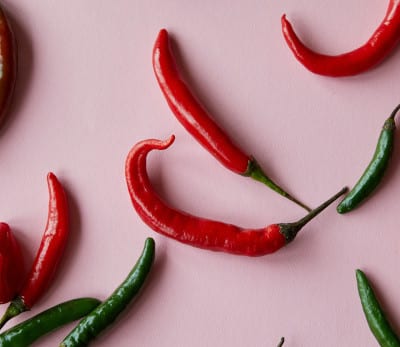
How Hot?
Cayenne measures at 30,000 – 50,000 Scoville Heat Units. Which is pretty hot.
For context, a bell pepper really has 0 heat, and a Jalepeno might be 8,000. Cayenne is about the level of Tabasco. On the hot end, a Habenero or Scotch Bonnet is usually in the 100,000 – 300,000 range. Police pepper spray is in the millions!
Kids & cayenne peppers
As long as your kids don’t bite into a cayenne from off the vine, growing the peppers is usually fine.
It’s when you get into handling peppers that you want to use some caution. What you want to avoid is your kiddos slicing a cayenne with bare hands and then touching their skin or eyes!
Use common sense please! I always cut hot peppers while wearing gloves unless I am forgetful and then I always end up burned!
Know your kiddo and your family’s palate. After all, many cultures grow up eating hot & spicy food, with kids no exception. In general, the younger the child, the less developed the digestion.
What are common uses for cayenne?
Cayenne is probably most familiar as the culinary spice you can buy at the grocers.
Medicinally, people have used cayenne for a number of uses. Our favorite folk recipe use is “Fire Cider” which is a digestive tonic made from Apple Cider Vinegar, cayenne, and a few other ingredients.
How do you grow cayenne peppers?
There are 2 basic ways to grow cayenne chili peppers in your garden:
- Buy a plant
- Grow from seed
See the resource section for growing peppers from seed. Start early. My planting instructions on the seed packets all say 6 or 8 weeks before last frost date, but my seedlings did better with an extra month and being potted up into 2” pots before they were transplanted.
Remember: peppers are summer plants – they can’t go out in the garden until the ground is warm enough. May or early June.
Know your zone!
How do you overwinter peppers?
So, let’s say you planted your peppers, and the plants look wonderful. You harvested a bunch. You decide to overwinter some of your plants to give them a better start next season.
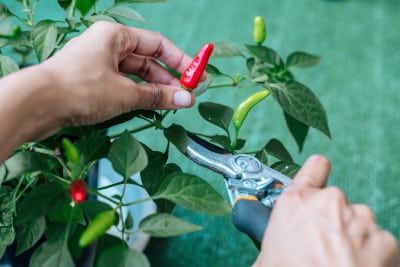
The basic steps are as follows:
- Harvest all the peppers off of the plant. Even the green ones.
- Select (and clean) your pot. A half-gallon worked well for my larger peppers.
- Dig up your plant, getting as much of the roots as possible.
- Rinse off the roots in cleaning solution (if you don’t want bugs in your house – I used soap and Neem Oil)
- Trim the top of the plant until it looks like a stick with a couple of branches. This is the hard part. Watch Pepper Geek’s video below. The plants will look terrible if you have never done this before!
- If the roots need trimming, now’s a good time. Roots and stick should sort of balance.
- Put some clean potting mix in the pot and put the plant in the pot while adding potting mix and spreading out the roots at the same time. Plant at the same depth your pepper was at, unless you could see its roots coming off the stem. Then cover those roots.
- Give it a watering to settle the potting mix. Add more if needed.
- Water once a week. You don’t want it to dry out, and you don’t want it to ever sit in water.
- Place in a quiet cool-ish place with some light. A basement can work.
- Pinch leaves until the plant is ready to start its spring growth, probably after the equinox.
That’s the basic idea.
Source for the How-To
I found a terrific resource about peppers. With a super-practical video on how to overwinter.
Pepper Geek on How to Overwinter Pepper Plants
Summary
Overall, we tucked away 22 Pepper plants for winter.
- 4 Sweet Reds
- 3 each of Cayenne, Habenero, & Serrano
- 2 Big Jims
- 1 each of Mini-Yellow, Pepperoncini, Aurora, and Keystone Giant.
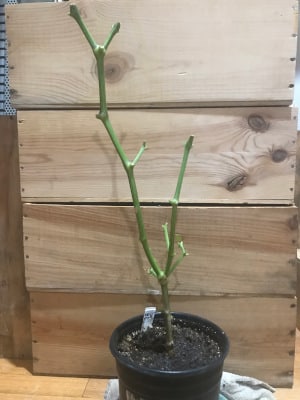



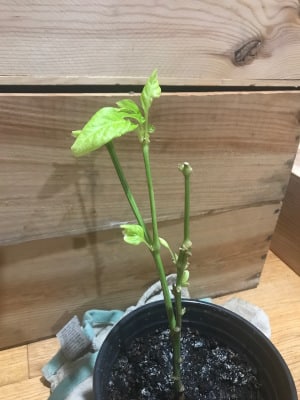
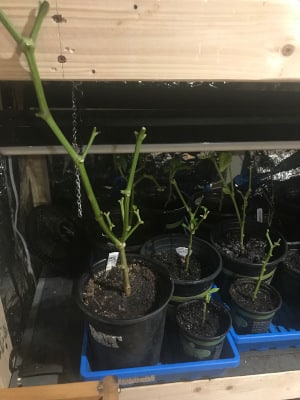
Overwintering Peppers makes a fine homeschool project. It’s part science, part botany, part handicraft, part nature study… I guess it’s also just kind of fun.
I hope you enjoyed this glance at how we are overwintering our pepper plants this year. We’ll try to make a follow-up if they grow an abundant harvest next season!
UPDATE: Second season
Surviving both the over-wintering and the growing season for the second year!
I didn’t have enough cayenne or Aurora Peppers survive the over-wintering, so I started a few seeds of those, along with some Jalapenos which unfortunately were not big enough for over-wintering (they looked weak!)
So, I’ve tucked away the following plants for this second winter:
- 2 Sweet Reds (which produced a lovely amount of peppers)
- 8 Cayennes (I’m working on medicinal uses of cayenne this winter using more than 1 pound of fruit harvested!)
- 2 Aurora Peppers (these are so much fun! They are purple and then turn red in an ornamental size, but with decent flavor, about a cayenne on the Scoville scale.)
- 2 Serranos
- 1 Keystone Giant
- 1 Big Jim
- and 2 unknowns (Don’t you hate when you can’t find your label at the end of the season?)
A total of 18 plants this year to overwinter.
Altogether, a better harvest than the first year. I planted them all in “Grow Bag” containers from Bootstrap Farmer — mostly in the 7 or 10-gallon size (You can get them on Amazon also). I put about 2-3 peppers in the 7-gallon size with some flowers or basil and 4 or 5 in the larger size with the same companions. I just love those grow bags because I can move them to the sun as needed.
Side note on planting in the Grow bags — My peppers did great in them along with basil, calendula, and marigolds. My tomatoes and zinnias did not do as well. I think it’s because peppers don’t like “wet feet” and I live in a very dry area, so they fully drained with every watering. The tomatoes, on the other hand, like their water. They dried out too much when they were on the concrete patio.
I love gardening because there’s always something to learn!

Related Posts
For More Study
General Resources:
- What is overwintering? | Gardening Knowhow
- Plants to Grow in a Winter Garden | Growfully
- Overwintering Peppers | Get Busy Gardening
Cayenne specifics:
- Capsicum annuum | Pepper Geek
- Cayenne Chili Peppers | Chili Pepper Madness
- Hot Pepper Heat Scale | Pepper Joe
- Chili Peppers for your child’s diet | Greengos Cantina
- Cayenne | Medicinal Herb Info
- Cayenne pepper benefits | Herbal Remedies Advice
- Fire Cider | Mountain Rose Herbs
- Fire Cider Recipe | Chili Pepper Madness
